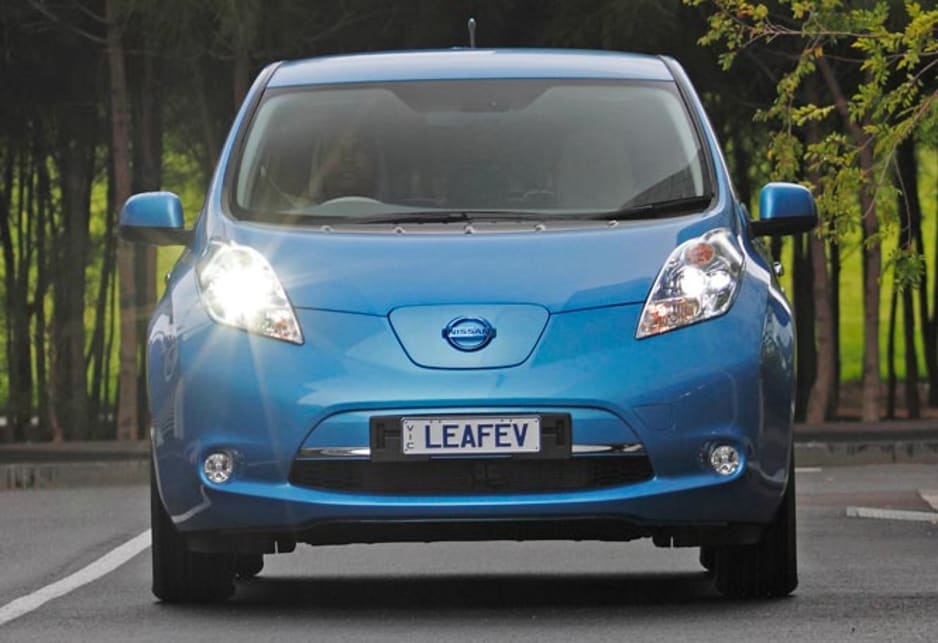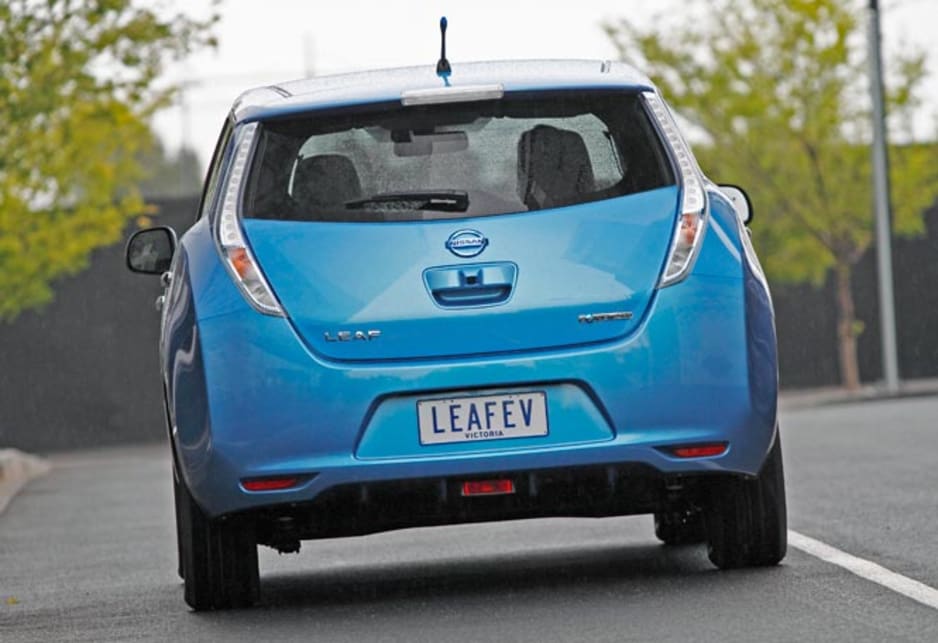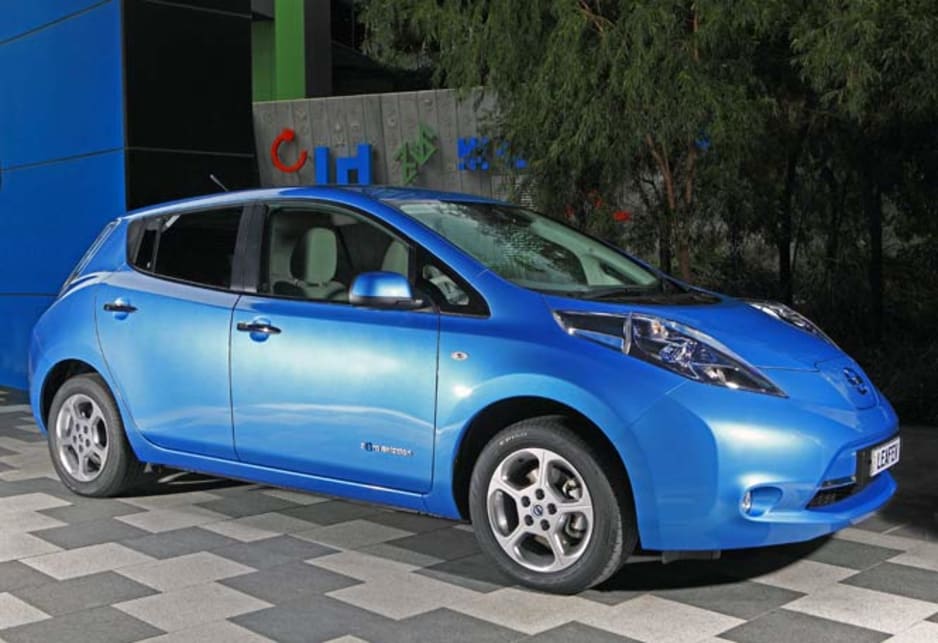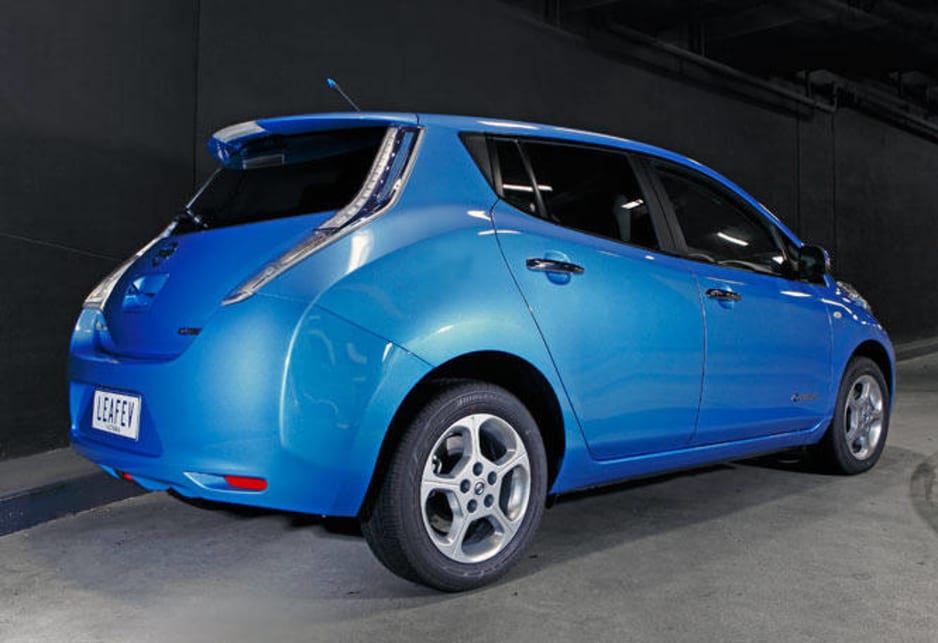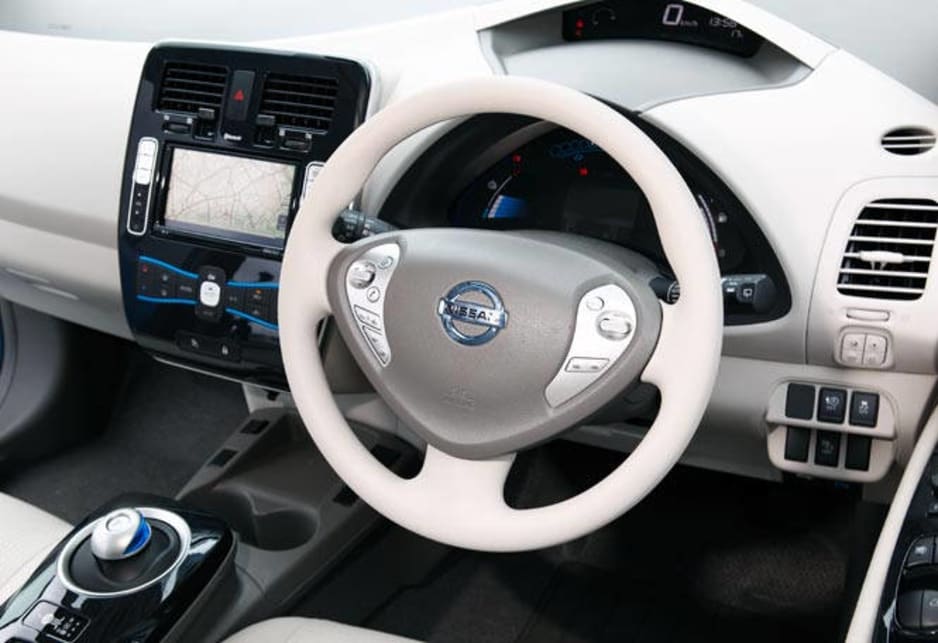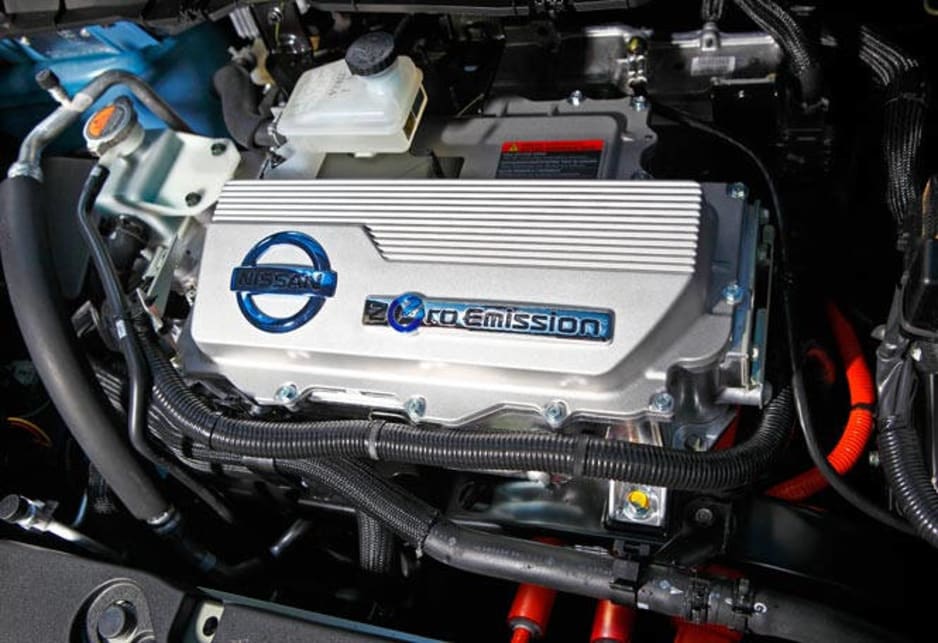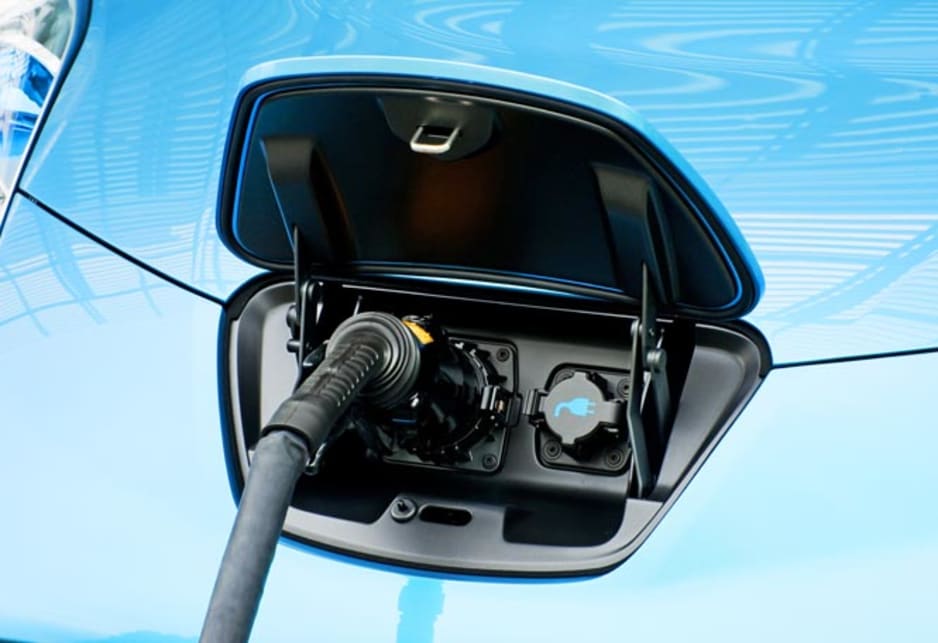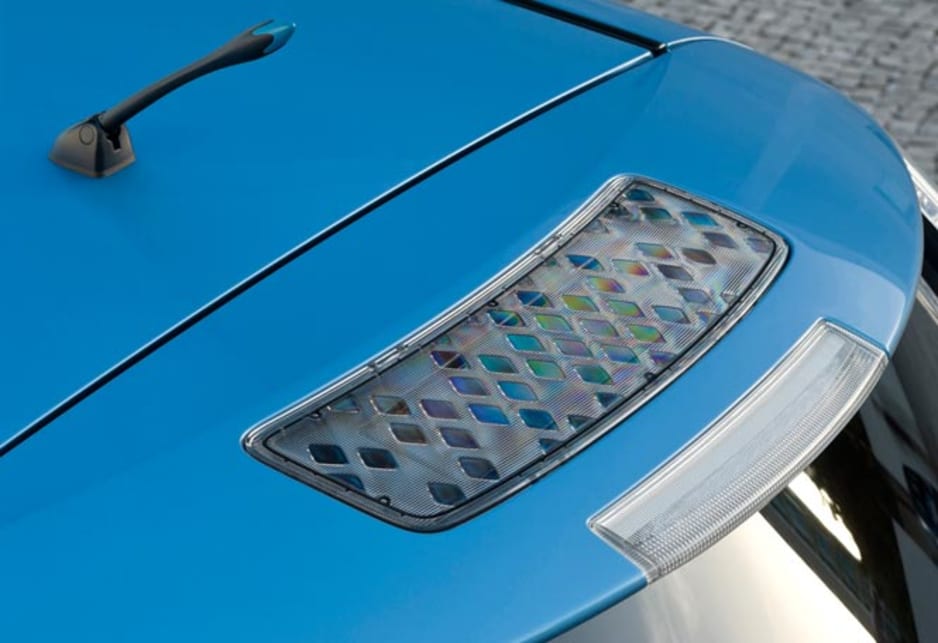
Nissan Leaf 2011 Review
- Nissan LEAF
- Nissan Leaf 2012
- Nissan LEAF Reviews
- Nissan Reviews
- Nissan Hatchback Range
- Hatchback
- Nissan
- EV
The battery-powered Leaf is a real car, not just a science experiment, and surprisingly nice to drive. We don't know yet about the price, which could easily jump beyond $60,000, and you have to ask serious questions about electric cars in a land of brown coal power stations.
Still, Nissan has done an impressive job and, after driving a whole range of electric cars in recent years - including the Mitsubishi iMiEv, Subaru Stella, MiniE and even the Chevrolet Volt - it currently leads the field. Then again, you cannot buy one yet and any talk about the Leaf must include the dreaded words 'range anxiety', which apply to any form of transport that relies solely on juice from a battery. Nissan says it will have trucks ready to rescue a Leaf that runs out of charge.
VALUE
This one is impossible to answer. We don't know the price, except it's likely to be around three times more than the sticker of the similarly-sized, petrol-powered Mazda3, and we also don't know how much it will cost to charge or replace - if necessary - the battery pack.
Still, Nissan is pushing ahead fast with the Leaf and says the car is a commercial reality. It is also transferring the technology across to its global alliance partner, Renault, and has a number of Leaf spin-off models on the drawing boards including a sporty coupe.
TECHNOLOGY
Everything about the Leaf is new and unique, from the basic body through to the lithium-ion battery pack, low-energy air-conditioning and seat trim made from recycled plastic bottles. More than 90 per cent of the car is claimed to be recyclable, and the bumpers are made from ... recycled bumpers.
The Leaf has clever low-drag bodywork and tyres - not really new, as they are similar to the Toyota Prius - but has a 250-kilogram lithium-ion battery pack under the floor that feeds an electric motor with high-tech transmission. It means 280 Newton-metres of torque for realistic real-world performance.
The technology never seems to stop, right down to special sat nav that automatically tracks the location of the nearest plug-in recharge points. It would be easy to write a book on the technology in the Leaf, and someone is probably doing it now.
DESIGN
The Leaf looks good - slightly tasty, slightly different, but not weirdoid and definitely more than just a golf cart with a big battery pack. The size is Mazda3-Corolla compatible and, unlike the Volt that has a very cramped rear seat, most people would not pick it as a battery car by the shape or cabin.
Design work includes a nice plug-in point hidden in the nose, a special charger cable that comes with the car, and the high-tech dashboard display that allows the driver to track every system in the car for maximum efficiency and to prevent the disaster of a flat battery.
SAFETY
Nissan promises five-star NCAP and the Leaf should deliver. It has all the usual safety systems - ABS brakes, ESP stability control and airbags - as well as a special electrical cut-off for a crash and a metal safety cell around the battery, which is housed below the floor in the middle of the car for maximum impact protection.
DRIVING
Nice. That's the one-word verdict on the Leaf. It is comfy and quiet, idiot-proof to start and drive - although you must keep a wary watch for pedestrians who don't notice the silent newcomer - and has impressive suspension, steering and brakes.
Most people would not pick it as a battery car, except for the lack of noise from an internal combustion engine in the nose. And the lack of noise they would enjoy in the cabin when the car is driving. This Leaf is one of two that have been rushed to Australia for an electric-car trial by the Victorian government, and Carsguide only has a 30-kilometre drive for a taste test in suburban Melbourne.
The Leaf is a long way down the electric road from a Mitsubishi iMiEV or Subaru Stella, or even the MiniE, which I have driven in the past. It is more practical than a Volt, although the GM car has an onboard petrol engine that extends the range and eliminates fears of a total battery drain. It's a genuine production car, which means all the touch-and-feel stuff is just like every other Nissan.
The ride and handling, too, is impressively 'normal'. The Leaf has an impressive turn of pace and easily keeps ahead of most traffic away from the lights. It is very very quiet up to 80km/h and the air-con works well.
The high-tech displays take some learning, but the computers say there is 130 kilometres of driving range and that falls only marginally during my 20-kilometre run. Switching to Eco mode and killing the aircon stretches the distance to a planned plug-in by around 20 kilometres.
This is only Day One of the Leaf story in Australia, and it's very hard to make a genuine assessment without a price tag - estimated at $60,000, or roughly three times the price of a Corolla - but the signs look good. Now, if only Australia had more sources of green power to fuel this green machine.
"This car is real," the boss of Nissan Australia, Dan Thompson, says simply. He is right. But the reality includes a lot more questions that need answers before the world slides across from oil to electric, including the start date for sales to ordinary Australians and the crucial price tag.
VERDICT
A real-world electric car that sets the benchmark.
NISSAN LEAF
Price: estimated $60,000
Engine: 80kW AC synchronous motor
Transmission: single-speed reduction gear, front-wheel drive
Fuel: electricity, 8-hour trickle charge or 3-hour fast charge
Battery: 24kW-hour lithium ion
Range: claimed 130km
Body: five-door hatch
Emissions: zero (car)
$9,987 - $9,999
Based on 3 car listings in the last 6 months
$9,987 - $9,999
Based on 3 car listings in the last 6 months


